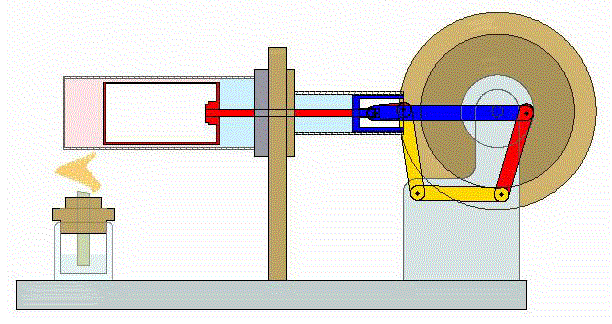Stirling Engine History
On September 27, 1816, Robert Stirling applied for a patent for his economiser at the Chancery in Edinburgh, Scotland. By trade, Robert Stirling was actually a minister in the Church of Scotland and he continued to give services until he was eighty-six years old. But, in his spare time, he built heat engines in his home workshop. Lord Kelvin used one of the working models during some of his university classes.
In 1850 the simple and elegant dynamics of the engine were first explained by Professor McQuorne Rankine. Approximately one hundred years later, the term “Stirling engine” was coined by Rolf Meijer in order to describe all types of closed cycle regenerative gas engines.
Stirling engines are unique heat engines because their theoretical efficiency is nearly equal to their theoretical maximum efficiency, known as the Carnot Cycle efficiency. Stirling engines are powered by the expansion of a gas when heated, followed by the compression of the gas when cooled. The Stirling engine contains a fixed amount of gas that is transferred back and forth between a “cold” end (often room temperature) and a “hot” end (often heated by a kerosene or alcohol burner). The “displacer piston” moves the gas between the two ends and the “power piston” changes the internal volume as the gas expands and contracts.
Stirling Engine Animation
Below is an animation of the 2.670 Stirling engine.

Animation of the 2.670 Stirling Engine.
Air in the engine is cyclically heated (by an alcohol burner) and expands to push the power piston (shown in blue) to the right. As the power piston moves to the right, the yellow linkage forces the loose-fitting, red “piston” (on the left half of the machine) to displace air to the cooler side of the engine. The air on the cool side loses heat to the outside world and contracts, pulling the blue piston to the left. The air is again displaced, sending it back to the hotter region of the engine, and the cycle repeats.
The Stirling engine cycle can also be used “in reverse”, to convert rotating motion into a temperature differential (and thus provide refrigeration). Use your favorite search engine to find additional links on Stirling engines!










